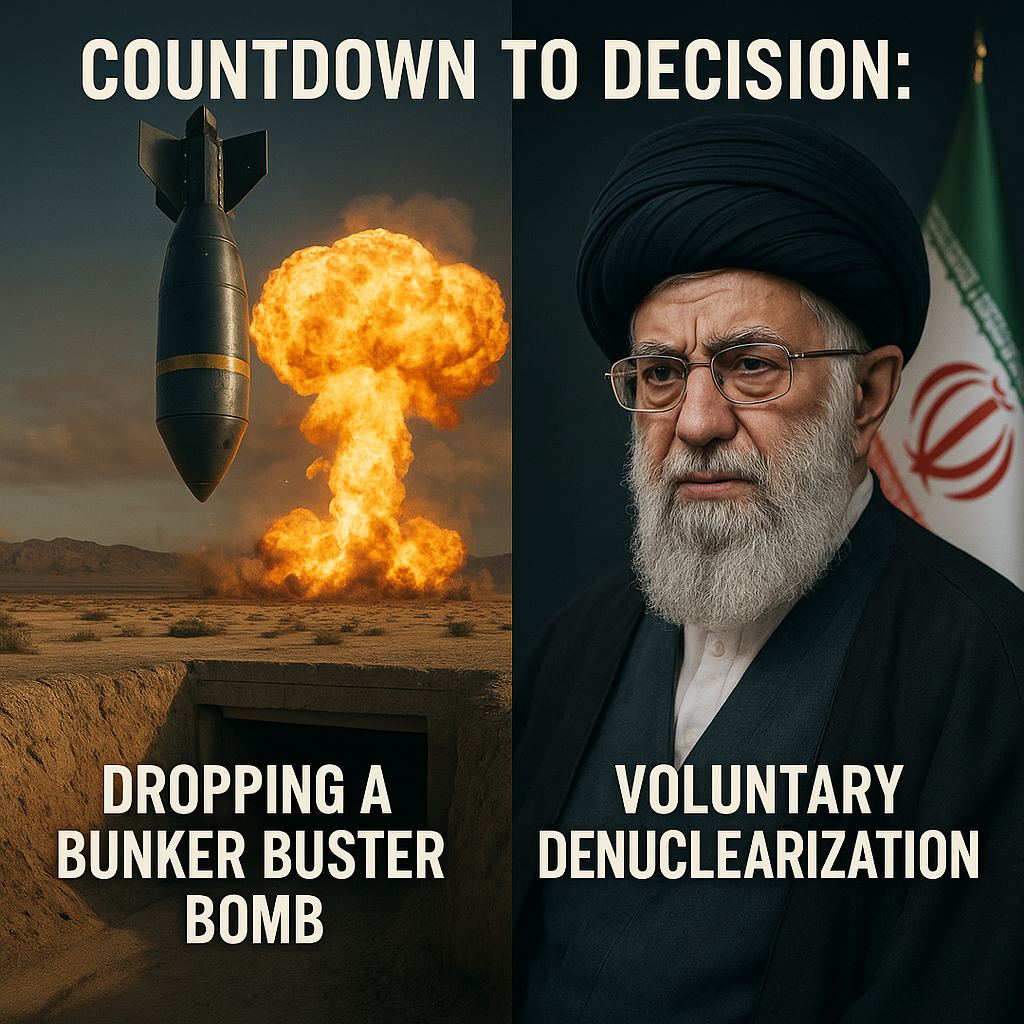Countdown to Decision: Confronting Iran’s Nuclear Ambitions—Precision Strike or Strategic Pressure?
Here's a comparative analysis of the two main strategies for eliminating Iran’s nuclear threat: (1) dropping a bunker buster bomb, and (2) pursuing voluntary denuclearization through diplomacy and pressure. This outlines the pros and cons of each approach in clear terms:
Final Insight:
A combined approach may be the most effective:
Credible threat of military action (including bunker busters) paired with
Intense diplomatic engagement, regional alliances, and covert disruption (e.g., sabotage or cyber ops),
Ensuring Iran knows that failure to denuclearize voluntarily will result in force.
Conclusion: The Right Path Forward
While a bunker buster strike may seem like a swift and decisive option, it is fraught with risks: massive regional escalation, unpredictable retaliation, and only a temporary setback to Iran’s capabilities. Most critically, it could unite the Iranian people behind a regime they might otherwise oppose, and undermine global support for U.S. leadership.
On the other hand, relying solely on voluntary denuclearization through diplomacy has proven to be vulnerable to deception, stalling tactics, and political shifts both in Iran and the U.S.
Therefore, the correct choice might be a hybrid strategy:
Maintain a credible, visible military threat—including bunker buster readiness—to deter deception and demonstrate resolve.
Simultaneously lead a multinational diplomatic offensive with strict timelines, snap-back sanctions, and covert disruption tools (cyberattacks, intelligence sabotage).
Support Iran’s internal democratic movements with information campaigns, technology access, and asylum pipelines for dissidents.
The goal is not just denuclearization but sustainable peace through weakening the regime’s grip without igniting a war that fuels their narrative. True victory lies in empowering the Iranian people, not just destroying their weapons.




